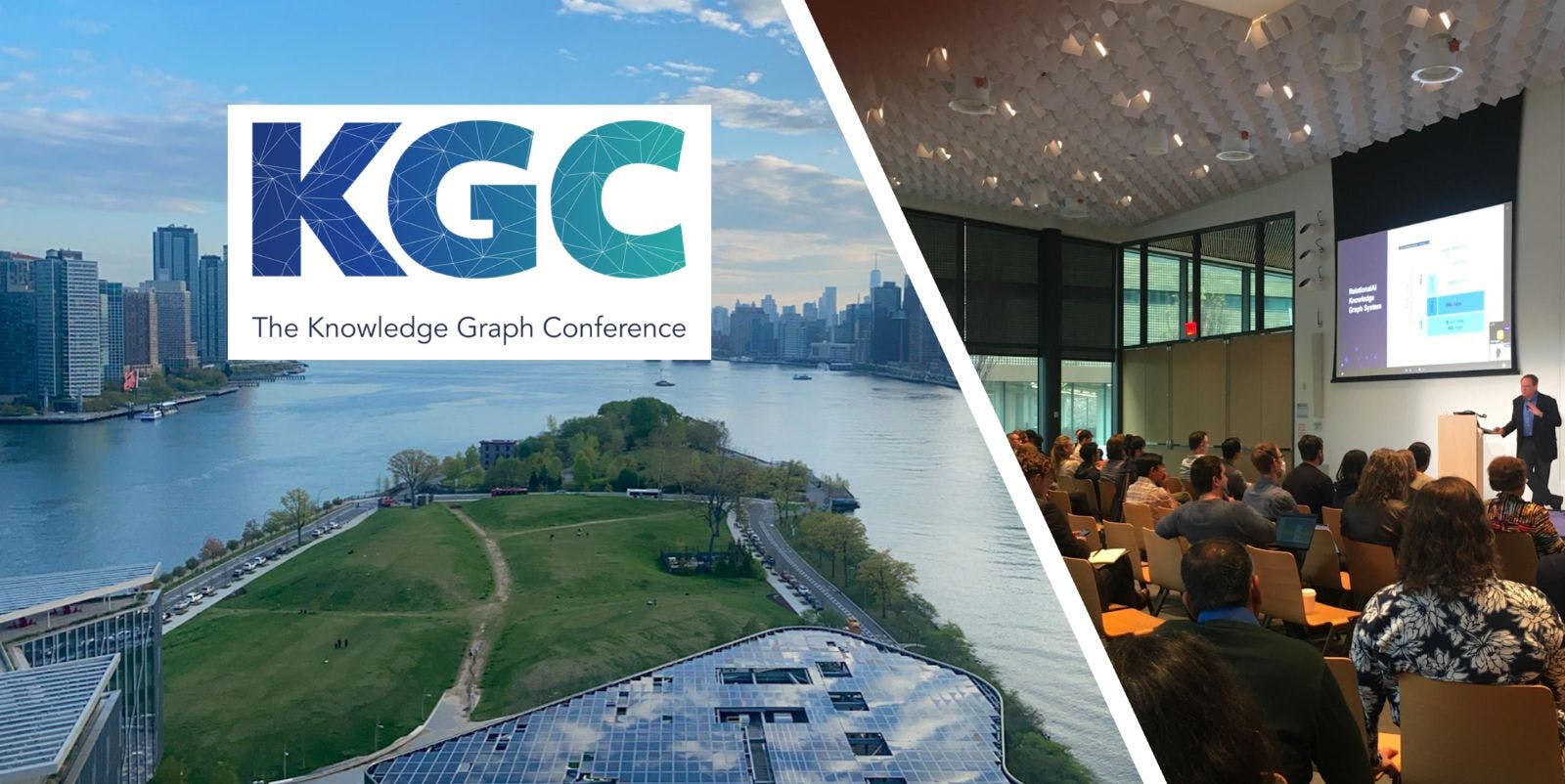KGC Highlights: The Relational Approach to Graphs is Here to Stay

We recently participated in the Knowledge Graph Conference (opens in a new tab) (KGC) in New York, which included educational workshops, guides to getting started, and expert thought leadership in knowledge management and graphs. This hybrid event over five days drew participation from academic and commercial experts from Robert Metcalfe of “Metcalfe’s Law,” and Bob Muglia the former CEO of Snowflake, to David Meza, NASA’s lead knowledge graph expert and Sr. Data Scientist. A key takeaway from the event is that a relational approach to graphs is here to stay.
This event brought together many firsts for RelationalAI: our first KGC in person, the first in-person conference for RelationalAI, and our first time meeting some colleagues and friends face to face! The event also came a week after our first press release, announcing $122M in funding for our knowledge graph system.
RelationalAI was involved in several KGC sessions highlighting the need for a relational approach to knowledge graphs: our board member Bob Muglia provided the opening keynote, members of our field team highlighted our work with the UN’s City Resilience initiative, and Mark Austen presented AT&T’s AI as a service platform, which includes the use of RelationalAI knowledge graphs. We also conducted a virtual demo and answered questions on programmatic governance.
From the Modern Data Stack to Knowledge Graphs by Bob Muglia
The lead keynote, “From the Modern Data Stack to Knowledge Graphs,” was presented by Bob Muglia, who recently joined our board of directors. In his talk, Bob discussed the growth and coming of age of the modern data stack and the role he sees for knowledge graphs with a semantic layer.
With his decades of experience (some call him the bard of databases!) Bob provided insights into how this space will unfold in the future, as data scientists consider what can be done with the algorithmic capabilities of relational technology. Specifically, Bob predicts that the business model will no longer be “something we put up on a whiteboard that an engineer needs to look at to write some Java code against.”
He described how, in the RelationalAI knowledge graph system, the model becomes the program itself, so that business analysts can understand and make changes to the data structures. “Think about thousands of people getting involved who know about the business — think about that!”
As highlighted in the ZDNet coverage (opens in a new tab) , Bob’s talk unites roughly fifty years of database technology, and it’s well worth watching the full recording (opens in a new tab) yourself.
Knowledge Graphs in AI as a Service by Mark Austin of AT&T
Mark Austin gave a fantastic talk on how AT&T is leveraging knowledge graphs today and the applications for them in the future. Mark illustrated how AT&T is using RelationalAI to create “recipes” to compute features for machine learning. In particular, they use this method to predict and reduce robocalls. He then talked about how these features are added to their quickly growing feature store (a cache of predictive elements for machine learning). He further discussed how a knowledge graph helps reduce redundant or repetitive features and enables his team to find existing features much faster.
Mark concluded with the provocative thought that in the future everything the data science team does may be in a knowledge graph.
UN City Resilience using Relational Knowledge Graphs by Michelle YI
Our Senior Director of Applied AI Michelle Yi gave a great workshop on “Advancing UN City Resilience Efforts Using Relational Knowledge Graphs For Risk Modeling.” She covered how the UN Office for Information Technology has partnered with RelationaAI to support the analysis of risks with an automated system based on a knowledge graph.
This graph is built by codifying domain knowledge from City Resilience experts and ingesting public data. To understand how events can impact cities, they combined graph analytics and reasoning, using techniques such as neurosymbolic and probabilistic ML.
This ten-minute video gives you a brief overview.
Using Knowledge Graphs for Metadata Management and Governance
Finally, we also conducted a demo in our virtual booth and answered questions on how to build a programmatic governance suite using RelationalAI. RelationalAI enables you to automatically discover metadata, apply business policies, and create rules that validate those policies directly on your data.
The demo recording above reflects the Metadata Management series of blogs here and here.
We talked to a wide variety of people from diverse backgrounds at KGC – all trying to implement knowledge graphs to accomplish their goals in different ways. We answered questions on how knowledge graphs fit into modern data stacks to how they can be leveraged to modernize legacy applications. We were also excited to share how RelationalAI eliminates the issue of multiple and recursive joins, which stifle complex queries. Our dovetail join approach actually becomes more performant the more joins you have!
Researchers, academia, and businesses are simultaneously becoming aware of the power of knowledge graphs and expanding the ways in which they are already being used. It’s been amazing to watch the KGC event grow as more organizations adopt knowledge graphs to power their businesses. We’re excited to be part of this community and help businesses codify knowledge using RelationalAI to bring together data, logic, and context.
To get early access to the RelationalAI system and join our community, sign up for our monthly newsletter.

